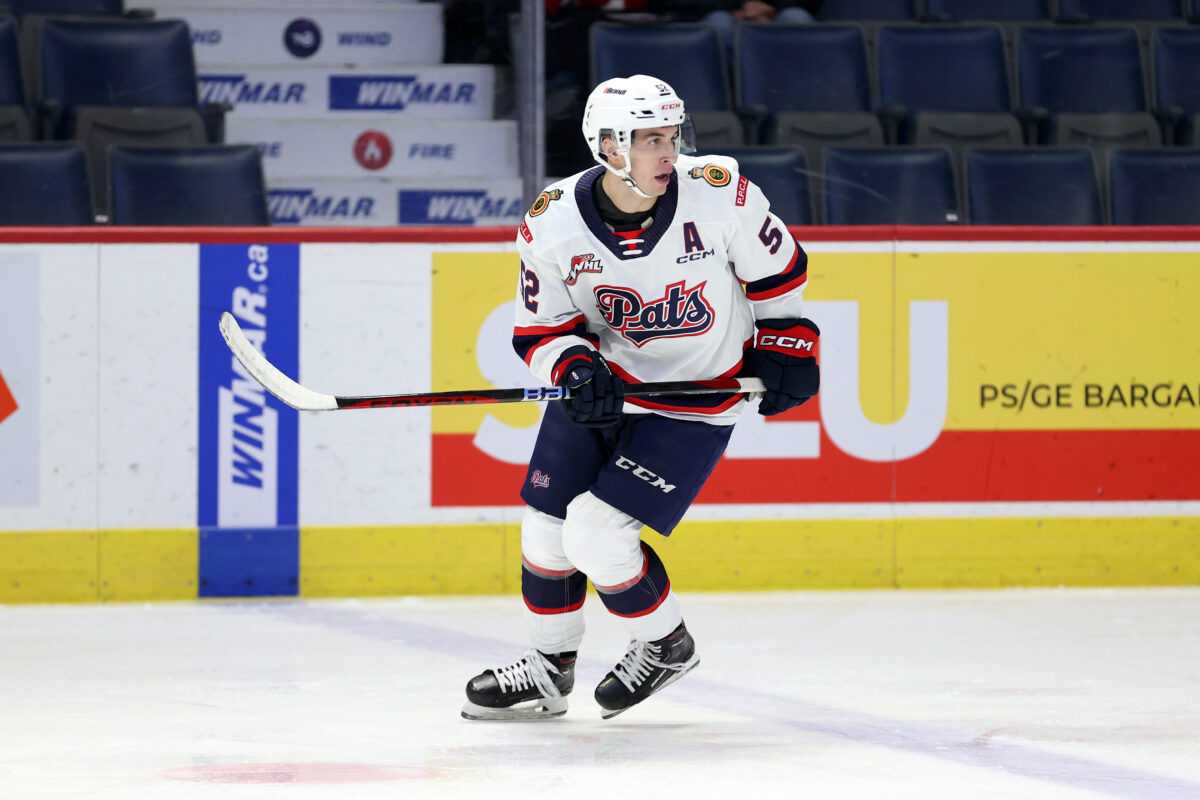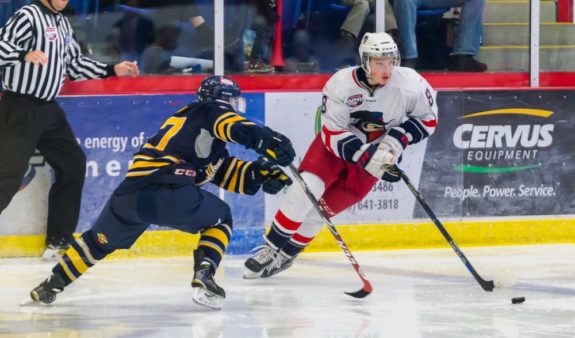After months of speculation, it finally happened – on Nov. 7, 2024, the NCAA agreed to make Canadian Hockey League (CHL) players eligible for Division 1 hockey programs for the 2025-26 season. Previously, the NCAA banned those playing in the Ontario Hockey League (OHL), the Western Hockey League (WHL), and the Quebec Maritime Junior Hockey League (QMJHL) because they received a monthly stipend of $600 and thus, in the eyes of the NCAA, were professional athletes. However, last summer, a class-action lawsuit on behalf of a player who lost his college eligibility opened up the opportunity for change.
There’s no question that this is a monumental decision that could change the face of junior hockey, and Division 1 schools can start recruiting CHL players immediately following the agreement. However, in actuality, little will likely change for any party involved. Each league offers something different for developing players, and since the league’s organization won’t change with this new deal, fans won’t see an influx or mass departure of players from their favourite teams.
CHL Won’t See an Exodus of Top Stars
The biggest problem following Thursday’s agreement is the lack of information, but one of the biggest questions raised was which players the NCAA will target to recruit because it sure looks like the CHL’s top 18 and 19-year-olds will be high on college’s radars. One OHL general manager (GM) saw this discrepancy as a serious threat to the health of his league, saying, “[The] NHL needs to get involved. If not, 18s and 19s could be jumping ship” (from ‘Everything to know about the NCAA’s decision to make CHL players eligible,’ The Athletic – 7/11/2024).
The exodus could have started already. Back in September, Regina Pats’ forward Braxton Whitehead verbally committed to Arizona State University for the 2025-26 season, and there’s no telling how many other players have already secretly entertained recruiters in anticipation of this deal.

However, as a 20-year-old, Whitehead is in his last season of CHL eligibility, meaning he wouldn’t have had a place with the Pats next season anyway. As it stands, CHL teams are only allowed three 20-year-old players, as developing younger players is deemed a higher priority. That forces some teams to make difficult decisions; earlier this season, the Saskatoon Blades cut ties with long-time goalie Austin Elliott, despite starting the year with a 3-0-0 record, following the return of one of their 20-year-old forwards from NHL rookie camp. The team already had their starter in Evan Gardner, and using up one of their overage spots on a backup goalie didn’t make sense for the team. The OHL’s London Knights claimed him off waivers, but that forced the Knights to release their own overage goalie Owen Willmore, who is still without a place to play.
With the NCAA’s lifted ban, players like Willmore and Elliott could find a Division 1 team to play for instead without fear of pushing someone else out of a spot. The NCAA is much more relaxed with free agency rules; players can sign a professional contract following their freshman season if they are not still eligible for the NHL Draft, so many college free agents are signed at 21-23 years old or older.
Related: NCAA to Allow Players to Participate in the CHL
The new agreement also won’t include players who have already signed an entry-level deal, according to College Hockey Insider publisher Mike McMahon. That means that the WHL won’t have to worry about losing Berkly Catton, Riley Heidt, Terik Parascak, and Andrew Basha, all of whom signed entry-level deals over the past several months. While that still leaves undrafted players like Roger McQueen, Michael Misa, and Caleb Desnoyers as potential targets, there’s no guarantee they could qualify for the university they want to play at. One CHL coach who used to coach at the Junior A level commented, “I had a lot of kids that wanted the Harvard or even a Clarkson but guess what? They couldn’t get in” (from ‘Everything to know about the NCAA’s decision to make CHL players eligible,’ The Athletic – 7/11/2024).
Junior A and USports Are Most at Risk
There are a lot of detractors for CHL players to go play NCAA hockey, especially if they still have eligibility remaining with their current club. But those won’t be as strong for players at the Junior A level. In 2023, the WHL’s Calgary Hitmen drafted Noah Kosick in the first round of the Bantam Draft, but the talented centre chose to pursue the NCAA route and thus went to play with the United States Hockey League’s (USHL) Sioux Falls Stampede before joining the University of Michigan. However, with the new agreement, he won’t lose his college eligibility with the Hitmen, and so in October, he signed a CHL player agreement and so far has two points in six games.
Junior A is a tier below the CHL and isn’t as competitive as its Major/Junior counterpart, but for many Canadian hockey players looking to play college hockey, it was the only way to keep their eligibility. It’s why Cale Makar chose to play with the Brooks Bandits in the Alberta Junior Hockey League (AJHL) instead of the Medicine Hat Tigers, who drafted him in the 2013 WHL Bantam Draft, or why Adam Fantilli went down to play with the USHL’s Chicago Steel instead of joining the OHL’s Saginaw Spirit. With the new agreement, players can play with the CHL team that owns their rights before joining an NCAA program.

It’s arguably one of the biggest upsides for CHL teams. A WHL GM commented to Scott Wheeler of The Athletic, “On the positive side, we will get all the top young players coming to the CHL because we’re the best development option at that age,” while another from the OHL said, “We think it’s a good thing” because “players from USHL and British Columbia Hockey League (BCHL) likely track back into the CHL” (from ‘Everything to know about the NCAA’s decision to make CHL players eligible,’ The Athletic – 7/11/2024).
The Canadian Junior A leagues will likely take a greater hit than the USHL, though, as the American league has become one of the best junior programs in the country and more comparable to the CHL than other Junior A organizations. It also provides American players with a more local development path. So, while fewer Canadians may go down to play in the league, more Americans will have an opportunity to pursue their dream closer to home.
Then there’s USports, Canada’s university athletic organization. While many schools offer high-end education, USports is a significant step below the NCAA when it comes to sports programs. CHL players receive a scholarship when they graduate to the school of their choice, but until now, that was limited to Canadian universities. Few players have gone from those programs to the NHL, and while there are examples like Logan Thompson and Joel Ward, players can now use their scholarship for big NCAA programs, which is a much more attractive option. While that’s great for the players, it will hurt Canada’s USports.
Junior Hockey Still Comes Down to Choice
The new deal boils down to offering more options for top athletes to play hockey. However, that choice has been around for decades, and while one route has become much easier, it’s not for everyone. NCAA programs only play around 30 games a season, while CHL teams play 68. There are positives and negatives in both routes that players, parents, and agents have endlessly pondered and debated when trying to figure out the best route to make their dreams come true.
Former NHLer and current President of the OHL’s Sarnia Sting David Legwand has a great way of things about it. “I think guys think about it maybe too much,” he said to The Athletic ahead of Thursday’s deal. “There’s a route for everybody and picking that route is hard. It’s a lifelong decision and to do it at such a young age is difficult. And you don’t ever want to see anybody make the wrong decision. If the rules do change, it’ll help kids out and maybe extend that life decision a couple of years and give kids the best opportunity to see where they end up…It’s going to be the kids’ decision. Every league wants the best kids but that’s going to come about through recruitment and seeing your facilities and getting them involved to want to be a part of your team.” (from ‘What’s next for the CHL? Latest on NCAA decision, expansion, draft age changes, Memorial Cup,’ The Athletic – 18/10/2024).
So, while the deal is an important step for both the CHL and NCAA, it won’t lead to widespread changes in both leagues. Some players will leave the CHL early, and some Junior A programs will see a dip in talent, but in the end, everyone has their own opinions on what’s best for them, and this decision hasn’t changed any of that.
Sign up for our NHL Prospects & Draft Substack newsletter
